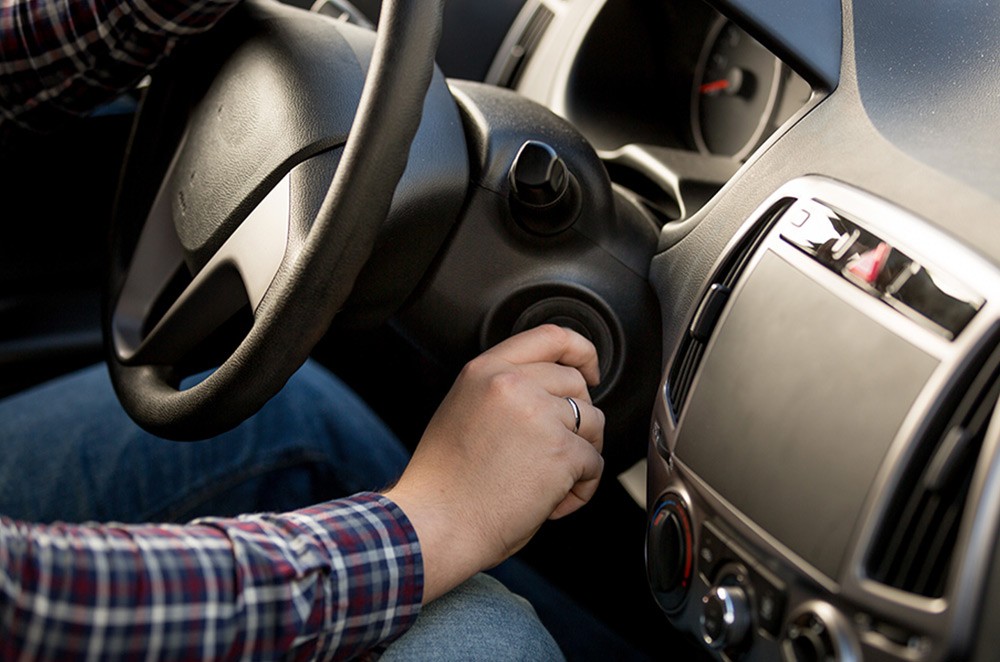Many modern vehicles come equipped with an Automatic Steering Wheel Lock, a feature designed to enhance security and prevent theft. This mechanism immobilizes your car’s steering when the ignition is off, acting as a crucial deterrent. While often overlooked, understanding how your automatic steering wheel lock works, its benefits, and how to operate it is essential for every car owner. Let’s delve into the details of this important car safety feature.
The Purpose and Benefits of an Automatic Steering Wheel Lock
The primary function of an automatic steering wheel lock is to deter car theft. When activated, it physically blocks the steering wheel from turning, making it incredibly difficult for thieves to steer the vehicle even if they manage to bypass other security systems. This built-in feature acts as a significant obstacle, discouraging potential criminals. Imagine a thief successfully starting your car – they would find themselves unable to control its direction, rendering the vehicle undrivable beyond a very short distance.
Beyond anti-theft, the automatic steering wheel lock also serves as a valuable safety feature, particularly when parking on inclined surfaces. If you are parked on a hill and your parking brake were to fail, a locked steering wheel, turned towards the curb, can prevent your car from rolling straight down the hill and into traffic. This added layer of security can be crucial in preventing accidents and protecting your vehicle and others.
How to Unlock Your Automatic Steering Wheel Lock
Unlocking your automatic steering wheel lock is usually a straightforward process, but it can be slightly different depending on whether your car uses a traditional ignition key or a modern start-stop button system.
For Vehicles with an Ignition Key
If your car uses a traditional key, follow these steps to unlock the steering wheel:
- Gentle Wiggling: With your left hand, gently but firmly wiggle the steering wheel from left to right. Apply consistent, moderate force while doing this.
- Turn the Key: Simultaneously, use your right hand to insert your ignition key into the ignition. Turn the key from the “lock” position forward to the “accessory” (ACC) or “start” position.
- Listen for Disengagement: As you turn the key, you should feel and hear the steering wheel lock disengage. The wheel should now move freely.
For Vehicles with a Start-Stop Button
For cars equipped with a start-stop button and a proximity key (key fob), the process is similar:
- Wiggle the Steering Wheel: Just like with a key ignition, use your left hand to gently wiggle the steering wheel, applying consistent pressure.
- Press the Start-Stop Button: While wiggling, use your right hand to press the start-stop button once. It’s crucial not to press the brake pedal while doing this, as pressing the brake will start the engine. Simply pressing the start-stop button without the brake will typically put the ignition into “ACC” mode.
- Check for Unlock: The steering wheel lock should disengage as you press the button and wiggle the wheel.
How to Lock Your Automatic Steering Wheel Lock
Locking your automatic steering wheel is even simpler and generally the same process for both key ignition and start-stop button vehicles:
- Turn Off Your Vehicle: Ensure your car’s engine is completely turned off and the key is removed from the ignition or the start-stop system is deactivated.
- Turn the Steering Wheel: Gently turn the steering wheel either to the left or right. You don’t need to force it.
- Listen for the Click: Continue turning the wheel until you hear a distinct “click” sound. This click indicates that the automatic steering wheel lock has engaged successfully.
Troubleshooting Your Automatic Steering Wheel Lock
Like any mechanical component, your automatic steering wheel lock can sometimes experience issues, especially as your car ages. Here are a few troubleshooting tips:
- Lubrication (for Key Ignitions): If you have trouble unlocking the steering wheel in an older car with a key ignition, the ignition cylinder might be sticking. Try spraying a small amount of automotive-grade lubricant into the ignition cylinder. Also, try using a spare key, as your primary key might be worn.
- Key Fob Battery (for Start-Stop Buttons): For push-start vehicles, a low key fob battery can sometimes cause issues with the electronic systems, potentially affecting the steering lock. Ensure your key fob battery is in good condition. Some cars will display a low battery warning on the dashboard. If you have a spare key fob, try using that to rule out a battery issue.
- Professional Inspection: If lubrication or battery checks don’t resolve the issue, or if you suspect a more significant problem like a worn or broken ignition cylinder or a malfunctioning electronic locking mechanism, it’s best to consult a qualified mechanic. Attempting to force the steering wheel or ignition can cause further damage.
Understanding and properly using your automatic steering wheel lock is a simple yet effective way to enhance your vehicle’s security and safety. By following these guidelines, you can ensure this valuable feature is working correctly and providing you with the intended protection.

